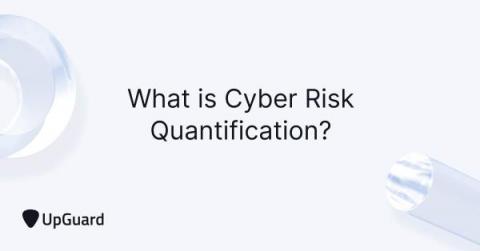What is Cyber Risk Quantification (CRQ)?
The threat landscape is expanding and security professionals are barely keeping up. On a daily basis, CISOs and cybersecurity staff need to contend with new malware variants, data breach attempts, ransomware attacks, zero-day exploits - all while ensuring uninterrupted dedication to vendor risk mitigation efforts. With so many cyber threats testing your cyber resilience at once, where should you focus your cybersecurity efforts?











